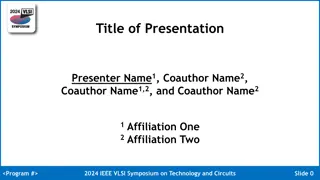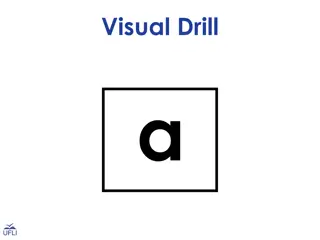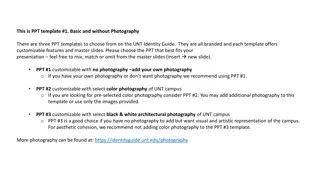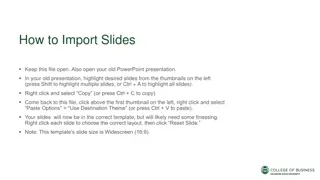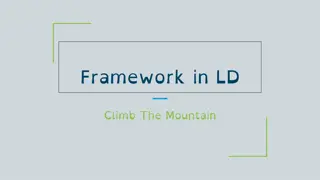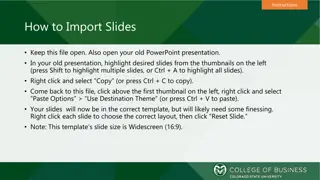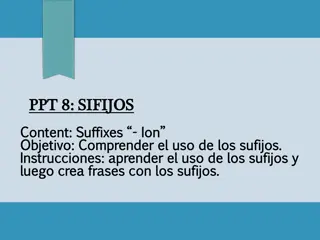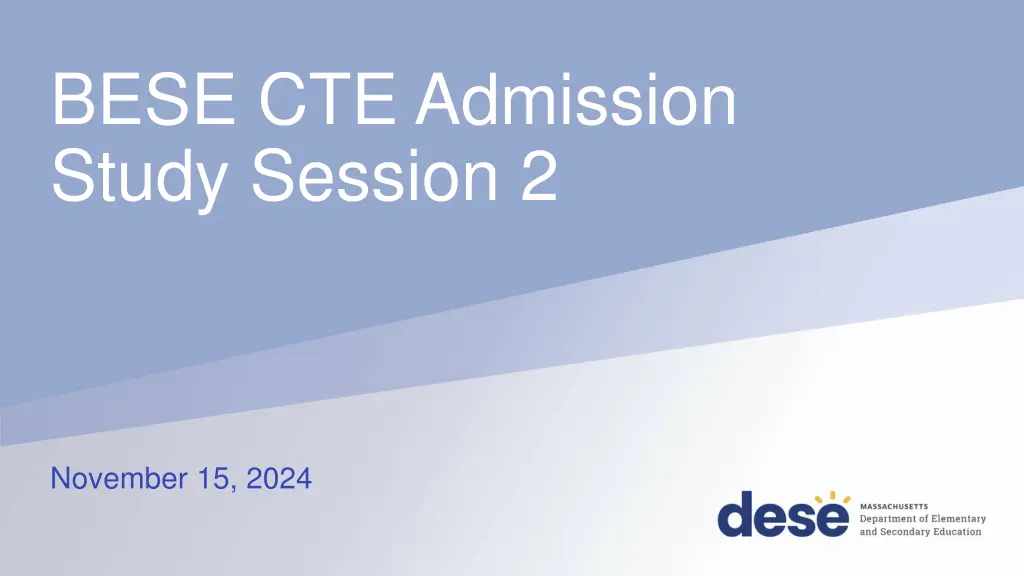
Career Technical Education Programs Overview
Explore the agenda and vision of Career Technical Education (CTE) programs in Massachusetts, focusing on student success, immersive learning experiences, and pathways to industry recognition. Learn about the impact of selective admissions and the components that make CTE programs valuable for students. Discover the various school models and opportunities offered in CTE schools.
Download Presentation

Please find below an Image/Link to download the presentation.
The content on the website is provided AS IS for your information and personal use only. It may not be sold, licensed, or shared on other websites without obtaining consent from the author. If you encounter any issues during the download, it is possible that the publisher has removed the file from their server.
You are allowed to download the files provided on this website for personal or commercial use, subject to the condition that they are used lawfully. All files are the property of their respective owners.
The content on the website is provided AS IS for your information and personal use only. It may not be sold, licensed, or shared on other websites without obtaining consent from the author.
E N D
Presentation Transcript
BESE CTE Admission Study Session 2 November 15, 2024 1
Agenda Context for Career Technical Education (CTE) Recap of research from previous study session Legal standard review Updated data and information Awareness and recruitment Admission 2
Context for CTE 3 3
MA DESE: Educational Vision What principles guide our work? What does that look like in practice? All students in Massachusetts, particularly students from historically underserved groups and communities are valued. Culturally and linguistically sustaining classroom and school practices. High expectations with targeted support. All students Are known and valued Learning experiences Are relevant, real-world and interactive Individualized supports Enable students to excel at grade level and beyond 4
Educational Vision and CTE CTE embodies relevant, real world and interactive learning. DESE believes that every 8th grade Massachusetts student can excel in a CTE high school program with the right tools and resources. 5
Recap of Research from Previous Study Session 6 6
We know students benefit when they have access. Students admitted to CTE schools are more likely to graduate and later have higher earnings than similar applicants who are not admitted. 7 7 Dougherty. S. M. Selective Admission CTE 2024 DESE
Career Technical Education (C74) Programs Signature components include at least 900 hours of immersive learning time, co-operative education and work-based learning in partnership with local employers, and opportunities to earn high-value industry recognized credentials. 55,728 Students in CTE. 8
Career Technical Education (C74) Programs There are 92 schools with CTE, offering 1,050 approved programs. Multiple school models: Regional CTE schools and agricultural schools (29) Municipal CTE schools (5) Comprehensive high schools with CTE (58) Hereafter, the 34 regional CTE, agricultural, and municipal schools will be referred to as CTE Schools. 9
Legal Standard Revisited 10 10
Federal Legal Standard Federal: Guidelines for Eliminating Discrimination and Denial of Services on the Basis of Race, Color, National Origin, Sex, and Handicap in Vocational Education Programs. Appendix B to Part 100 (Title VI) Prohibits use of criteria that have the effect of disproportionately excluding persons of a particular race, color, national origin, sex, or handicap from admission to CTE programs. 11
History and Changes to State Regulatory Language Beginning in 2003, our regulations required CTE programs to use 4 admissions criteria: Grades Discipline record Attendance Recommendation And allowed an optional 5th criterion: Interview 12
History and Changes to Regulatory Language In 2021, the Board voted to approve a revised regulation that removed the statewide, 4-criteria selective admission policy requirement. New regulation permits schools to set policies so long as they comply with federal and state law / guidelines. If a school does not comply, DESE will take actions it deems necessary to achieve compliance. This could include a requirement to institute an admissions lottery. See 603 CMR 4.03(6)(a). 13
History and Changes to Regulatory Language The revised admission regulation also: Prohibits use of selective criteria when there are enough seats. Prohibits considering excused absences and minor disciplinary offenses. Incorporates language from the Federal Guidelines that prohibit discrimination in CTE admissions. Institutes new data-reporting requirements and superintendent attestation that policy complies with federal and state requirements. 14
State Regulations and Local Policy 603 CMR 4.03(6)(a) Vocational schools and programs that use selective criteria shall not use criteria that have the effect of disproportionately excluding persons of a particular race, color, national origin, sex, gender identity, sexual orientation, religion, or disability unless they demonstrate that (1) such criteria have been validated as essential to participation in vocational programs; and (2) alternative equally valid criteria that do not have such a disproportionate adverse effect are unavailable. Locally determined policies include how criteria is used and weighted. 15
CTE Admissions Comprehensive View Awareness & Recruitment Retention & Success Admission 16 16
CTE Regulations Address Requirements for Middle Schools 603 CMR 4.03(6) Sending districts shall offer vocational schools and programs opportunities to provide middle school students with information about vocational programs and careers on-site at their middle schools, as well as through mail and email. Sending districts may not count middle school student tours of vocational schools or programs during the school day as unexcused absences if the vocational school or program confirms the student's participation, and may not unreasonably withhold student access to tours of vocational schools and programs during the school day. 18
CTE Schools Awareness Activities Access to mail and email lists of 7th and 8th grade students from sending schools. Visits to meet with middle school students in sending schools. Tours of CTE schools for students from sending schools. Open houses and events outside of school hours. Middle school counselor events. MyCAP as an emerging awareness activity. 19
My Career and Academic Plan (MyCAP) Who Am I? Personal/Social Domain Where Am I Going? Career Development ACT: DISCOVER: Skills Interests Talents Strengths PLAN: Course-taking Career Development Post-secondary options AP, Early College Contextual Learning experiences Applications and decision- making How Do I Get There? Academic and Postsecondary Planning Student driven and school, family and community supported 20
CTE Middle School Access Survey 23 of 34 CTE schools responded to DESE s recent survey about middle school access. Reporting CTE schools requested access to visit 8th grade students from 318 middle schools. Of those requests, 57 visits were denied. Of 185 tours offered to sending middle schools, 45 tours were denied. Six of 23 reported challenges obtaining mailing information. 21
Admission 22 22
Commonly Used Selective Criteria Since 2021 CTE Schools predominately use a combination of these selective criteria: Grades Discipline record Attendance Recommendation Interview 23
Recommendations and Interviews Families say: Challenges for bilingual students and students with language-based or executive functioning deficits to be able to shine in an admissions interview, where required. Nearly all CTE schools require at least one of these two selective criteria: Sending school recommendation Interviews (FCSN, Career & Technical Education: What Families Need to Know, 2022) 24
Examples of Topics for Sending School Recommendations Kindness Shows kindness in regard to the feelings, beliefs, rights, and traditions of others. Demonstrates leadership qualities and engages in activities promoting a positive school culture. Success - Works collaboratively with other students towards a common goal. Communicates effectively and appropriately with peers and adults. Work Readiness - Demonstrates a work ethic that displays their best effort in every task they complete and often seeks to take on extra work for the benefit of enrichment and growth. Honesty - Acts with honesty, integrity, shows resiliency, and maintains a positive attitude in all situations. Accountability - Follows rules, takes personal responsibility, and is accountable for their educational expectations in all instances. 25
Sample CTE School Interview Questions Tell me some things you might do outside of school to fill your time. How are these things important to you? Describe a trusted adult. Can you give examples of how we might see these qualities in you. Think about your future career goals meaning what you might want to do after graduating from high school if you are accepted? How do you think coming to this school instead of another high school will help you be more prepared for achieving your career goals? 26
Statewide Composition Index Analysis Composition Index is a tool for comparing applicants to admitted students in a standardized way. Combines individual results for 34 schools from 2021-2024. Calculates any disproportionality of offers of admission by comparing admissions data for selected student populations vs. their peers. Next slide provides an index analysis for English learners. See charts in appendix for more detail. 28
English Learner Students Admitted at Lower Rates Than Peers Who Are Not English Learners 29
Composition Index Findings In each school year from 2021-2024: English learners (EL) were admitted at lower rates than non- EL peers. Low-income students were admitted at lower rates than non- low-income peers. Students with disabilities (SWD) were admitted at lower rates than non-SWD peers. Students of color were admitted at lower rates than white peers. 30
Frequency Findings In 2024, for the 34 CTE schools, admittance rates were lower for nearly all schools for specific student populations. 31
Frequency Findings 0 of 34 schools admitted students with disabilities (SWD) at the same rate or higher than their non-SWD peers. 3 of 34 schools admitted low income at the same rate or higher than their non-low-income peers. 7 of 34 schools admitted students of color at the same rate or higher than their white peers. 8 of 34 schools admitted English learners at the same rate or higher than their non-English learner peers. 32
Frequency Findings: English learners Among the available applicant pool of English learners from 2021-2024 for 34 CTE Schools: 22 of 34 schools made fewer than 20 offers to English learners. 20 of 34 schools made fewer than 10 offers to English learners. 33
Enrollment in CTE and non-CTE schools Reminder of definitions: CTE Schools 34 schools that are "wall-to-wall" CTE including regional (26), agricultural (3), and municipal (5) Non-CTE Schools high schools that are comprehensive or do not have "wall to wall" CTE 34
Students of Color in CTE and Non-CTE Schools Grade 9 2020 % Enrolled State 2024 % Enrolled State 2020 % Enrolled Sending 2024 % Enrolled Sending Non-CTE Schools 43.1% 48.8% 44.3% 49.8% CTE Schools 38.9% 45.7% 38.9% 45.7% +4.2 +3.1 +5.4 +4.1 Grade 9-12 2020 % Enrolled State 2024 % Enrolled State 2020 % Enrolled Sending 2024 % Enrolled Sending Non-CTE Schools 40.1% 46.8% 41.0% 47.8% CTE Schools 37.0% 42.0% 37.0% 42.0% +3.1 +4.8 +4.0 +5.8 35
English Learners in CTE and Non-CTE Schools Grade 9 2020 % Enrolled State 2024 % Enrolled State 2020 % Enrolled Sending 2024 % Enrolled Sending Non-CTE Schools 9.9% 11.1% 10.7% 11.5% CTE Schools 6.5% 7.0% 6.5% 7.0% +3.4 +4.1 +4.2 +4.5 Grade 9-12 2020 % Enrolled State 2024 % Enrolled State 2020 % Enrolled Sending 2024 % Enrolled Sending Non-CTE Schools 7.7% 10.1% 8.1% 10.4% CTE Schools 4.7% 4.8% 4.7% 4.8% +3.0 +5.3 +3.4 +5.6 36
Students with Disabilities in CTE and Non- CTE Schools Grades 9-12 2020 % Enrolled State 15.9% 20.9% 2024 % Enrolled State 17.9% 20.2% 2020 % Enrolled Sending 15.8% 20.9% 2024 % Enrolled Sending 17.8% 20.2% Non-CTE Schools CTE Schools -5.0 -2.3 -5.1 -2.4 37
Low Income Students in CTE and Non-CTE Schools Grades 9-12 2020 % Enrolled State 28.9% 34.5% 2024 % Enrolled State 40.2% 43.4% 2020 % Enrolled Sending 29.9% 34.5% 2024 % Enrolled Sending 41.4% 43.4% Non-CTE Schools CTE Schools -5.6 -3.2 -4.6 -2.0 38
CTE Access Research Revisited In 2019, ran simulations for some MA schools with two versions: Proposed some schools for technical assistance modifications of criteria weights (i.e., points for grades, attendance etc.). Lottery Outcome: Tweaking selective criteria in simulated admissions sometimes resulted in a student population that looks less like the sending districts. The simulated lottery resulted in a student population that looks more like the sending districts. 39 2024 DESE
Next Steps 40 40
Monday Meeting Preview Hear from those closest to student experience including: CTE school superintendents Sending school and district leadership Middle school counselors Parent who is also a School Committee member and CTE Advisory Council member 41
Appendix 42
Composition Index: A Tool for Comparing Applicants to Admitted Students Complete Apps* Composition Index Student Group Offered Numerator Denominator All Students 100 50 non-SWD 60 30 0.6 0.6 1 Scenario 1 SWD 40 20 0.4 0.4 1 non-SWD 60 40 0.8 0.6 1.33 Scenario 2 SWD 40 10 0.2 0.4 0.5 non-SWD 60 45 0.9 0.6 1.5 Scenario 3 SWD 40 5 0.1 0.4 0.25 non-SWD 60 50 1 0.6 1.7 Scenario 4 SWD 40 0 0 0.4 0 43
English Learner Students Admitted at Lower Rates Than Peers Who Are Not English Learners 44
Low Income Students Admitted At Lower Rates Than Non-Low Income Peers 45
Students With Disabilities Admitted At Lower Rates Than Peers Without Disabilities 46
Students of Color Admitted at Lower Rates Than White Peers 47





